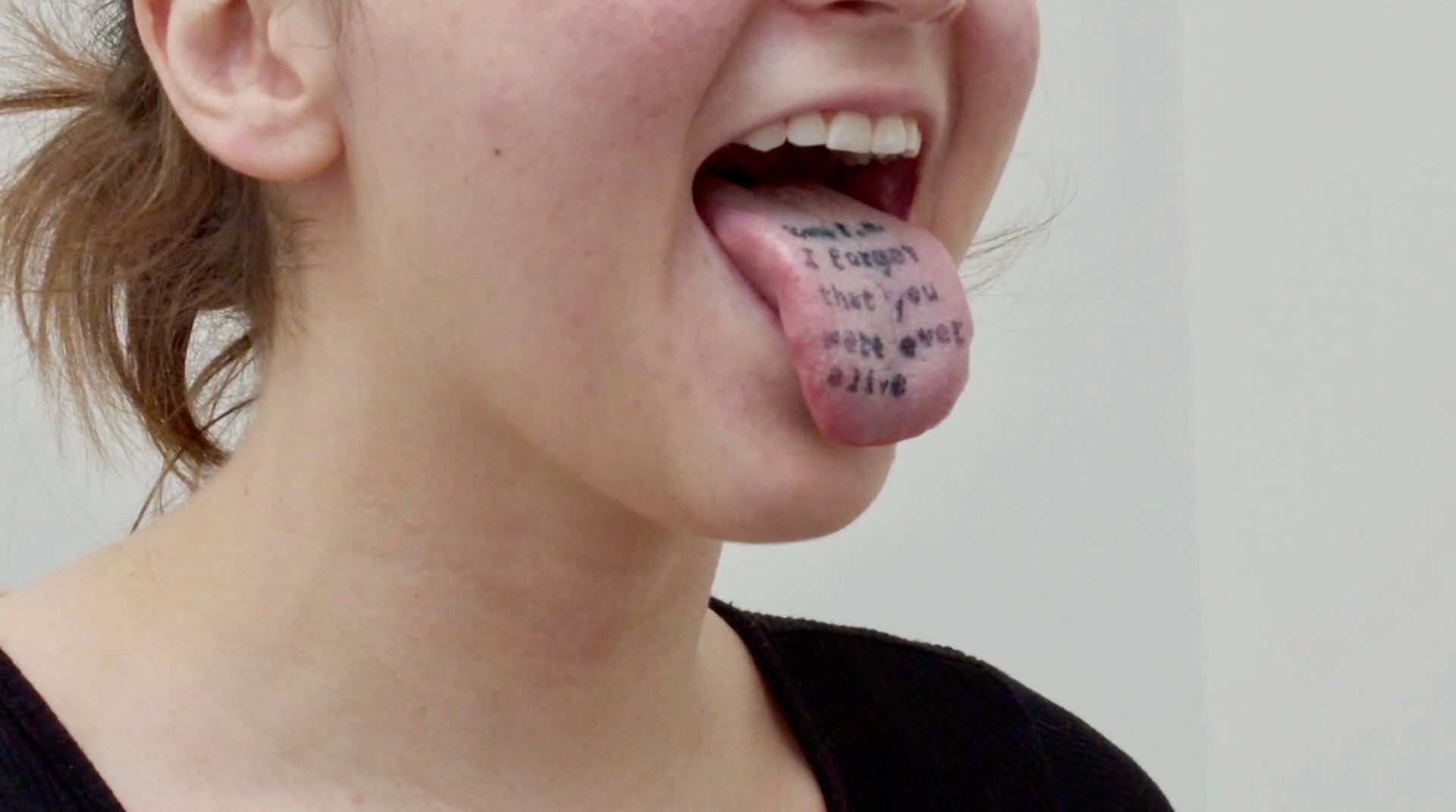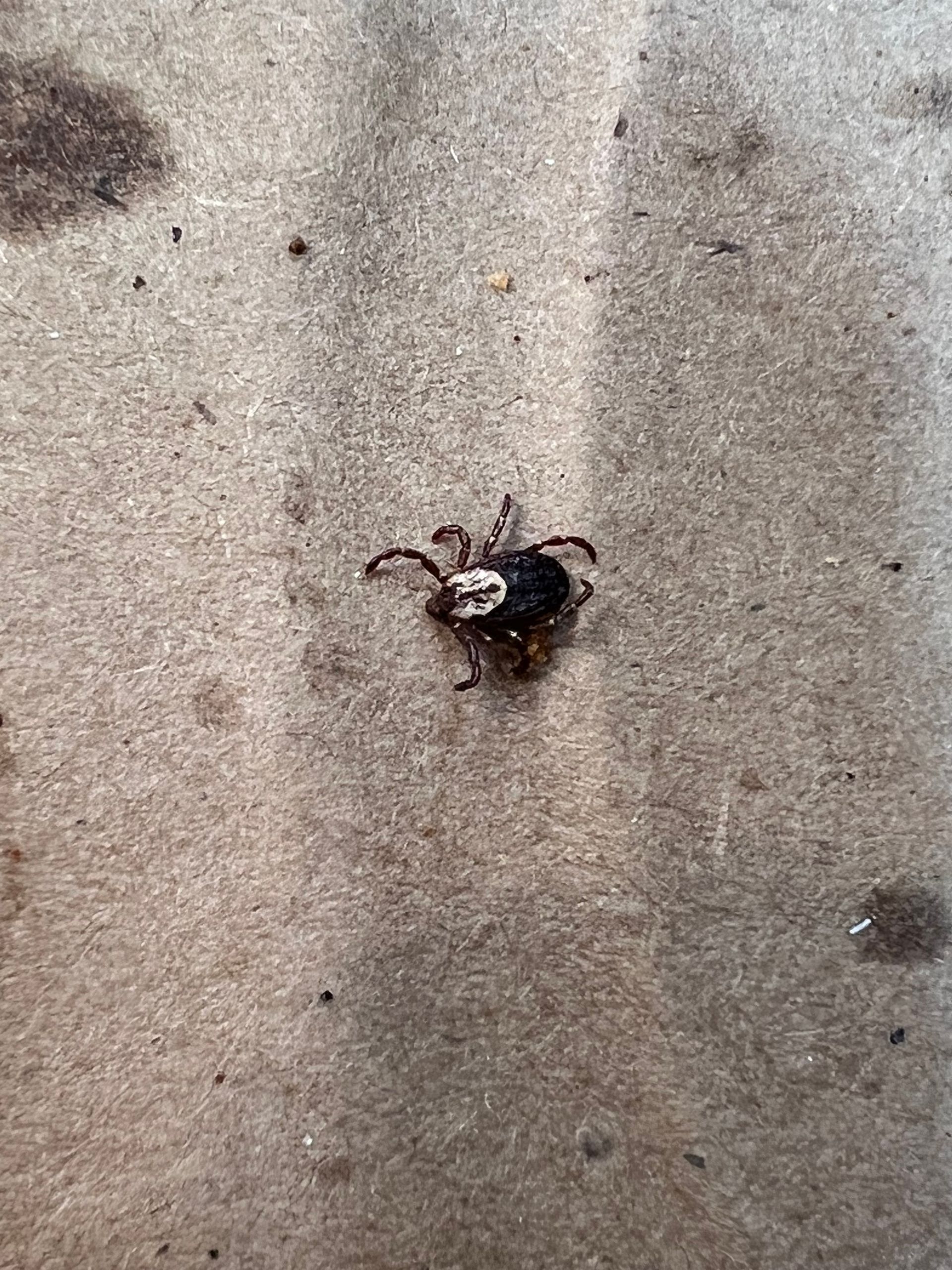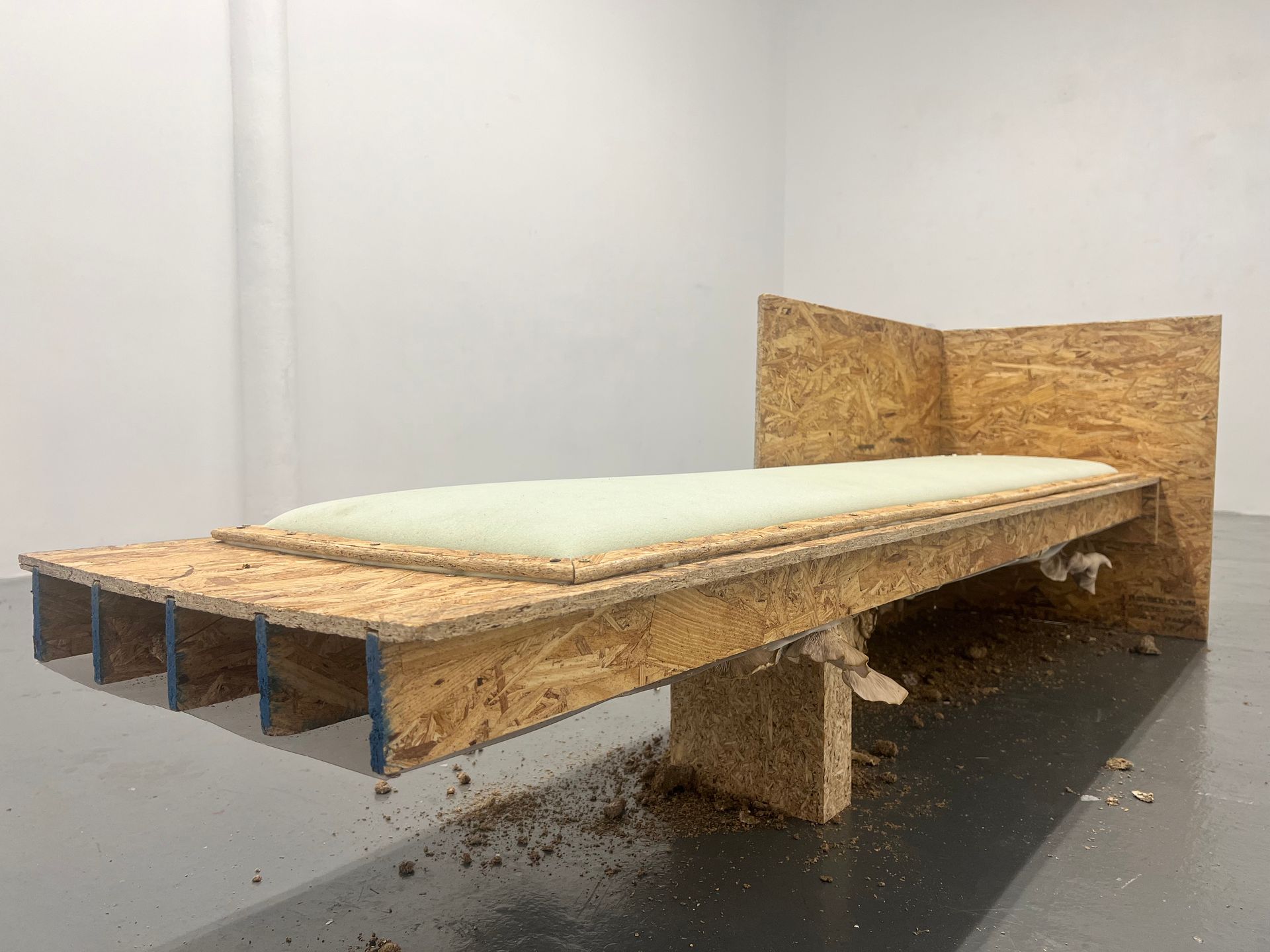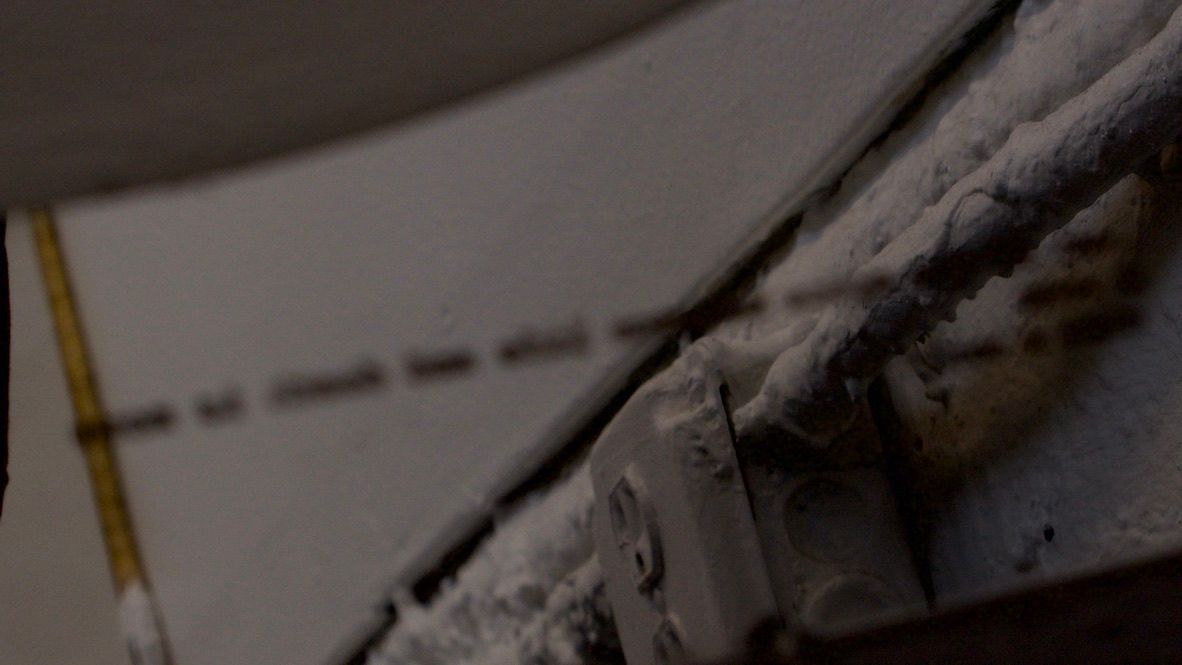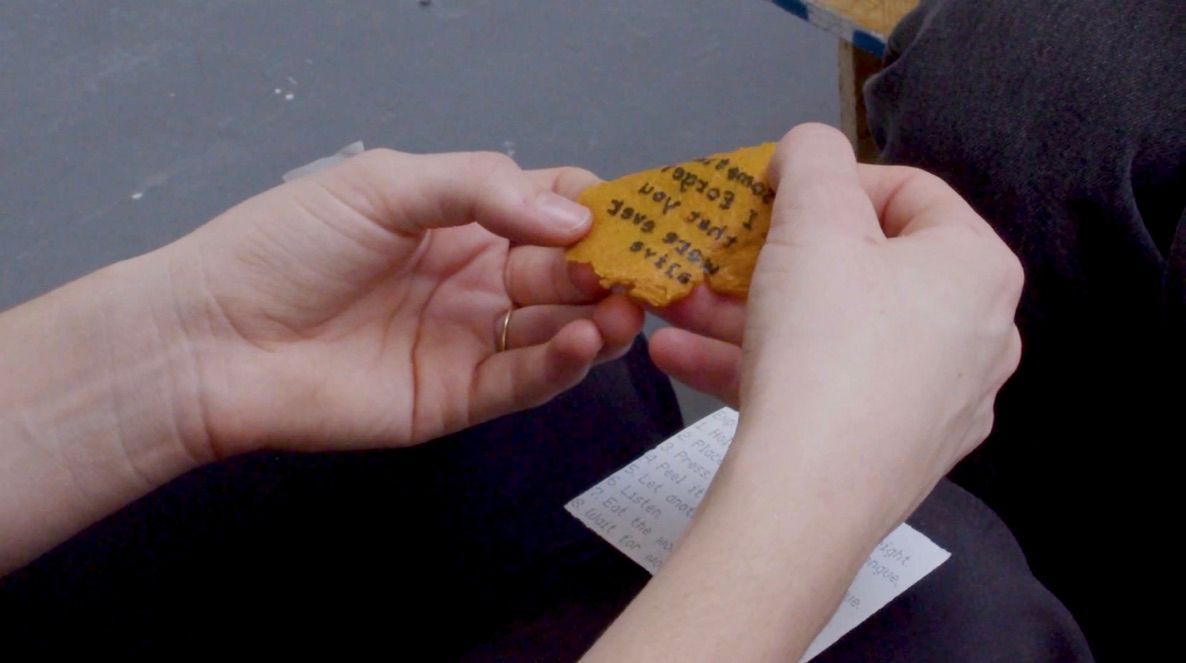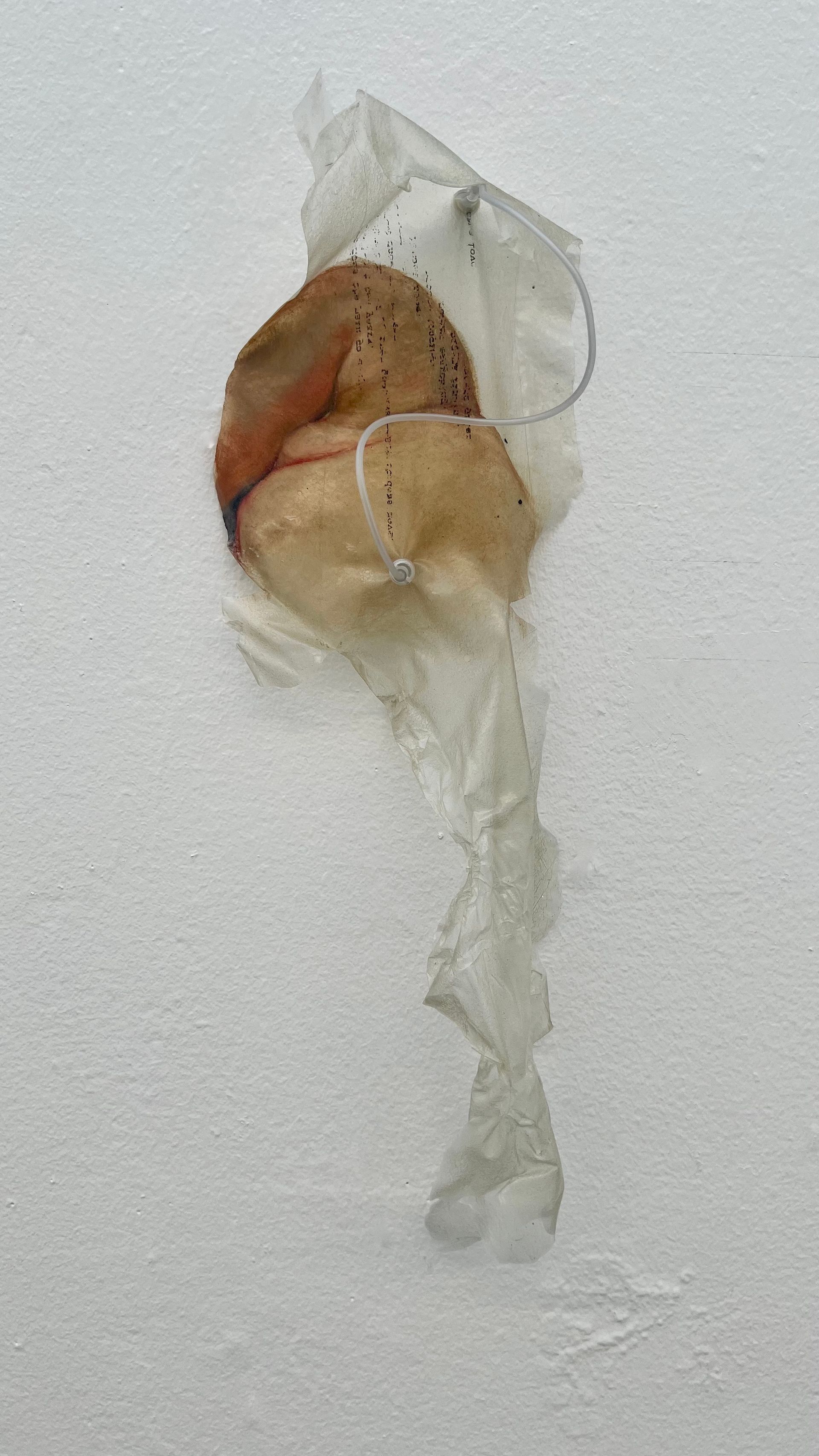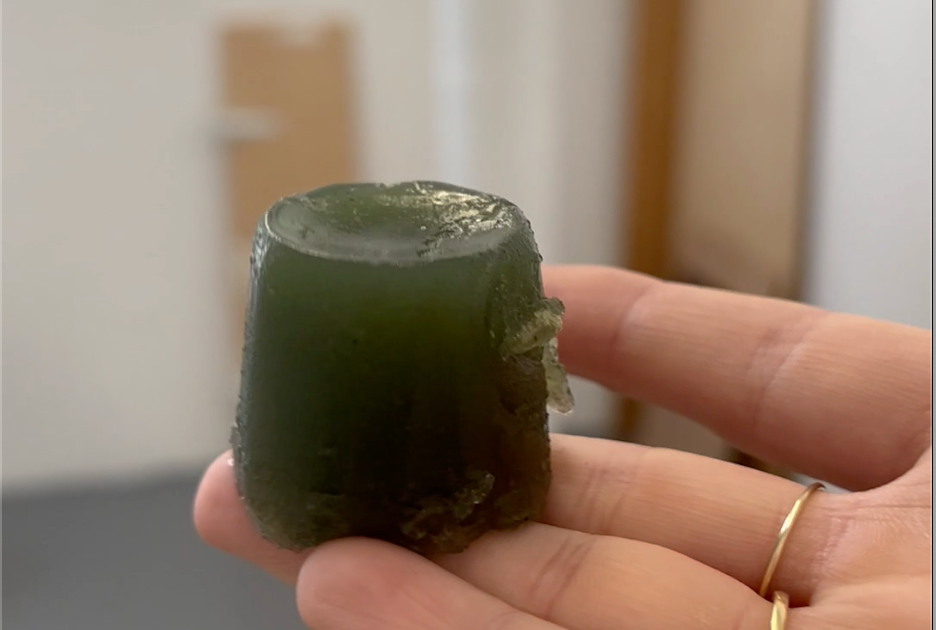How Can i Be Without Border
Mckenna Goade • December 15, 2024
Composting Communications
December 15, 2024
Composting Communications: How Can i Be Without Border?
The corpse (or cadaver: cadere, to fall), that which has irremediably
come a cropper, is cesspool, and death; it upsets even
more violently the one who confronts it as fragile and fallacious
chance. A wound with blood and pus, or the sickly, acrid smell
of sweat, of decay, does not signify death. In the presence of
signified death—a flat encephalograph, for instance—I would
understand, react, or accept. No, as in true theater, without
makeup or masks, refuse and corpses show me what I permanently
thrust aside in order to live. These body fluids, this
defilement, this shit are what life withstands, hardly and with
difficulty, on the part of death. There, I am at the border of
my condition as a living being. My body extricates itself, as
being alive, from that border. Such wastes drop so that I might
live, until, from loss to loss, nothing remains in me and my
entire body falls beyond the limit—cadere, cadaver.
- Julia Kristeva, Approaching Abjection
…
“He had stage 4 colon cancer for 7 years.”
These words taste bad on my tongue, but my lips love to say them.
“He had stage 4 colon cancer for 7 years.”
As if to explain his prolonged deterioration.
“He had stage 4 colon cancer for 7 years.”
As if it made it any better or worse.
…
“My dad died from stage 4 colon cancer.”
I’ve said it so often the words no longer have meaning.
“My dad died from stage 4 colon cancer.”
Is this really the easiest way to say it?
“My dad died from stage 4 colon cancer.”
—— I don’t think I ever realized it was a lie.
I don’t mean to say that cancer didn’t play a role in his death,
Because cancer did fill his lungs with fluid.
He couldn’t breathe.
He suffocated.
He drowned…
I used to make paintings about death, cyclical time, the body, barriers/edges/corners… but the work did not engage in these cycles I was so obsessed with. The materials of oil paint on canvas were created to be long-lasting, to trick artists into thinking they could hide from oblivion by creating something “archival.” I, too, fell into this trap as I considered the little physical legacy my father left behind. At one point, I considered attempting to make things that never died—an impossible quest to make immortal work that would ensure my place on this earth forever. But how long can you hold onto immortality when deterioration surrounds us? We are always dying, and we are always being born.
My grasp on making archival works quickly loosened as I felt the urge to embrace something else. Instead of running from inevitable entropy, I look to the moment when the ‘self’ deteriorates to the ‘other’ as the very place where we find meaning—the place where “I behold the breaking down of a world that has erased its borders: fainting away.”
I’m preoccupied with edges.
When I see a painting on a canvas
I tilt my head and shift to the side.
I press my face against the wall
Just to catch a glimpse of how they folded the corners.
Did they tape the edges to leave the raw canvas showing? (sexy)
D rings and a wire? French Cleats? A nail?
If we painted the land of the living, where would its edges be?
For reasons unknown to me, the moments where a painting meets the wall have always been the most important part of the composition. Maybe this significance was derived from my pursuit of finding where the edges of my material world meet the contours of the land of the dead. I ask, per Julia Kristeva, “How can I be without border?” These distances build my desire—can there be desire where there are no edges?
When considering borders, edges, barriers, boundaries, contours, outlines, and partitions, I first think of my skin. My skin is the surface where I meet the world. It is a boundary—but one that breathes. My skin touches air, and it touches my insides. My skin touches, my skin folds, my skin stretches, my skin sags, and my skin will wither… My skin's porous, changing surfaces cannot be preserved. I communicate through this barrier every day. Despite its disguise as a separator, it is the surface where I can connect with all that surrounds me. As Stacy Alaimo claims, “‘Nature’ is always as close as one’s own skin.”
Our Earth also breathes; our Earth also has skin. What messages is she communicating through her topsoil? Her algae scum? Algae is where the air touches the Earth, where Breath brushes against decay. From algae, I distill agar… and I cast bioplastic. Bioplastic is a fragile skin—impermanent, porous, always breaking down—bioplastic is slippery.
The viscous is a state half-way between solid and liquid. It is like a cross-section in a process of change. It is unstable, but it does not flow. It is soft, yielding and compressible. There is no gliding on its surface. Its stickiness is a trap, it clings like a leech; it attacks the boundary between myself and it.
When I accepted that I am viscous and that the boundaries between the immaterial and material worlds are slippery, I wanted to experience deterioration daily.
My voice (and, by extension, my breath) is a place where barriers are crossed. This breath transforms the written word into breathing letters. In Eros the Bittersweet, Anne Carson posits, “Letters make the absent present, and in an exclusive way, as if they were a private code from writer to reader…the act of communication [is] an intimate collusion between writer and reader. They compose a meaning between them by matching two halves of a text. It is a meaning not accessible to others.” If one’s goal is to pierce holes through varied and “separate” ecologies, should one be writing letters? Should they provide their half of the text and wait for the reader to provide the other? If Nature is, as Alaimo claims “a world of fleshy beings, with their own needs, claims, and actions” then why not try to, as Robin Kimmerer suggests in Braiding Sweetgrass, “Ask, and listen for the answer?”
I have long pursued reaching across barriers and creating ecology by touching things I perceived as out of reach. But now I am curious if one can actually touch anything. As Karen Barad points out in On Touching—The Inhuman That Therefore I Am, “a common explanation for the physics of touching is that one thing it does not involve is . . . well, touching.” Barad then explains that to a physicist, touch is the electromagnetic repulsion of your skin’s electrons against the electrons of the “other.” Perhaps the inability to contact anything builds Anne Carson’s Eros: “The boundary of flesh and self between you and me. And it is only, suddenly, at the moment when I would dissolve that boundary, I realize I never can.” Can this boundary not be dissolved because one cannot eliminate electrons? Is desire just electrons? Essentially, Barad asks,
Whom and what do we touch when we touch electrons? Or, rather, in decentering and deconstructing the “us” in the very act of touching (touching as intra-action), we might put the question this way: When electrons meet each other “halfway,” when they intra-act with one another, when they touch one another, whom or what do they touch?
In the process of decentering the “us” and communicating with the “we,” I am curious about who/what I have been reaching toward. Am I just reaching toward my “self”?
Thinking about our triangle
You, me, and the distance between.
Separation as a film
a skin
a barrier.
Is this why I want to pierce it?
I’m pressing into this plastic with every ounce of me.
But how much of me is just myself?
Or is it what once was you, and part of you
pushing from both sides?
The more I think about these barriers, the more I think they do not exist. (And maybe the only thing that distances us is translation). The “edges” of immaterial and material worlds may be represented by the implied boundaries between human/nature—but what about when these distinctions dissolve? When we imagine the interaction between human existence and the more-than-human environment through Stacy Alaimo’s “trans-corporeal” lens (trans indicating movement through), it becomes difficult to structure worlds as self/other, human/nature; instead, perhaps we are Eve Sedgwick’s “permeable we” (or Haraway’s Cyborg).
The portal to the space between
Life and Death
Inside and Outside
Self and Other
Will I find it in decomposition?
In Composting Feminisms and Environmental Humanities, Hamilton and Neimanis put forward the words of Anishnaabe and Haudenosaunee scholar Vanessa Watts. She says her society “conceives that we (humans) are made from the land; our flesh is literally an extension of soil.” To communicate with “we,” do we need the messages to return to “us?” The further I delve into this inquiry, the more I contemplate that my endeavor to communicate with the deceased may constitute an act of translation. The messages I perceive as being lost are merely mistranslated, and it is conceivable that the mechanism of this translation occurs through the process of composting.
I make art for dead people.
I’m not sure if they like it or even if they have seen it yet, but I know that they are aware of my incomprehensible desire to connect with them. I have tried facing paintings away from me and toward the wall—but in the end, I think this was just a clue for living viewers to recognize they weren’t my primary audience. I tried to dissolve the works in water, but with no image or word for the dead to read, what was I sending? Additionally, what does it mean to dissolve, and what does it mean to decompose (is there a difference)? I think I have landed on composting; maybe that’s how I send letters to the dead. Perhaps this simultaneous dissolution of “self” and connection to “other” is where the immaterial and material worlds meet.
If I were to write you a letter
How would I send it?
Maybe it needs to be nothing anymore for it to meet you.
When something becomes nothing
Does it go to Nowhere?
Can I send letters to Nowhere by making them disappear?
This disappearance is a lie. Can something truly disappear, or does it just move through porous membranes into something else? Compost is less disappearing and more reappearing.
I posit that despite its very literal intentions (dead people are often buried, so putting art in the ground might be a way for them to see it), there is something more poetic about the art of composting — a reintegration of the “I” into the “we.” Accepting that all things (including the self) will deteriorate is much more meaningful to me than making our “selves” last forever.
In conclusion, I am trying to touch untouchable things (but everything is untouchable), send messages that cannot be received (or are they just being mistranslated?), and look to where “self” composts to “other” (but I am not even sure if the self/other barrier exists). But if things cannot actually touch, there must be some kind of self/other distinction. I am/we are existing in a paradox.
Now, I am researching the permeability of boundaries—between life and death, self and other, human and more-than-human. Through concepts like Stacy Alaimo's trans-corporeality, Anne Carson's Eros, and Karen Barad's intra-action, I wrestle with the idea of touch, desire, and the impossibility/possibility of dissolving the boundaries between self and other (me and you). These reflections have culminated in a turn toward composting—not as disappearance but as a process of translation, regeneration, and connection. Ultimately, composting becomes both a metaphor and a practice, embodying the continual interplay of decay and renewal, the breaking of borders, and the profound intimacy of existing within a shared and cyclical world.
Bibliography
Alaimo, Stacy. “Trans-Corporeal Feminisms and the Ethical Space of Nature.” In Material Feminisms, edited by Stacy Alaimo and Susan Hekman, 237–264. Bloomington: Indiana University Press, 2008.
Barad, Karen. “On Touching—The Inhuman That Therefore I Am (v1.1).” Preprint. In Power of Material/Politics of Materiality (English/German), edited by Susanne Witzgall and Kerstin Stakemeier, 2015. Originally published in differences: A Journal of Feminist Cultural Studies (2012).
Carson, Anne. Eros the Bittersweet: An Essay. Princeton: Princeton University Press, 2023.
Douglas, Mary. Purity and Danger: An Analysis of the Concepts of Pollution and Taboo. London: Routledge & Kegan Paul, 1966.
Hamilton, Jennifer Mae, and Astrida Neimanis. "Composting Feminisms and Environmental Humanities." Environmental Humanities 10, no. 2 (November 2018): 501–527. https://doi.org/10.1215/22011919-7156859.
Haraway, Donna. "A Cyborg Manifesto: Science, Technology, and Socialist-Feminism in the Late Twentieth Century." In Simians, Cyborgs, and Women: The Reinvention of Nature, 149–181. New York: Routledge, 1991.
Kimmerer, Robin Wall. Braiding Sweetgrass: Indigenous Wisdom, Scientific Knowledge, and the Teachings of Plants. Minneapolis: Milkweed Editions, 2013.
Kristeva, Julia. “Approaching Abjection.” In Powers of Horror: An Essay on Abjection, translated by Leon S. Roudiez, 1–31. New York: Columbia University Press, 1982.
